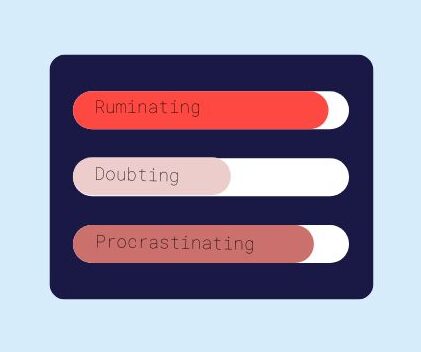
 Now that we’ve defined what behaviors will result in time-out, let’s consider implementation.
Now that we’ve defined what behaviors will result in time-out, let’s consider implementation.
It’s a good idea for a young child to have a designated time-out spot in the home. This could be the corner of a room or in a hallway. A room in the house that is relatively free of entertaining items could be used as well. You may use the child’s own room, but you want to make sure there are no toys in there during this time which can makes using their room difficult. The child should not be able to see a TV during time-outs. If they leave the designated area, the timer begins at zero again. When outside the home, you can assign time-out spots for places the child regularly visits. Sometimes, when in an entirely new location, you will need to define a time-out area on the spot.
In addition to a time-out location, there are two other aspects of time-outs that I’d like to highlight: planned ignoring and consistency. To better understand these two principles, it will be useful to understand the behavioral principles behind time-out. The better you understand the principles behind time-outs, the easier it will be to implement them effectively.
Behavioral principles are concepts that we utilize to change a behavior. There are two basic ways that we usually want to change people’s behavior. We can increase the frequency of a desirable behavior or decrease the frequency of an undesirable behavior. We increase behaviors through the use of reinforcement. Reinforcement can be done by providing a desired outcome or by removing an aversive outcome. As an example of increasing a behavior with a desire outcome, your employer increases the likelihood that you will go to work by paying you with a paycheck (providing a desired outcome). As an example of increasing a behavior by removing an aversive outcome, consider that annoying sound you car makes when you haven’t fastened your seatbelt. By fastening your seatbelt this sounds goes away (removing an aversive outcome), therefore you are more likely to wear your seatbelt today and in the future.
While reinforcers increase the likelihood of a behavior occurring, punishments decrease the likelihood of a behavior occurring. Just as with rewards, this can be done in two ways. We can add something aversive or take away something desirable. If your child comes home and tells you that he got a D and you scream at him for 15 minutes, then you’ve added something aversive (yelling). Alternatively, if they come home with a D, and you say “I’m taking your phone away for the week” then you’ve taken away something desirable. Both actions are intended to decrease the likelihood that your child will get another D.
Time-outs are a form of punishment. Time-outs are intended to decrease the frequency of a behavior by taking away something desirable: social contact. This point is highly important. Do not look at, argue with, talk about, scold, or negotiate with your child when they are in time-out because the purpose of time-out is to take away social contact. Many people think that it’s okay to talk to the child if are lecturing him on what he did wrong. Unfortunately, this conversation may actually be reinforcing for the child because they are getting one-on-one time with a parent. Therefore, consider all social contact, even contact that seems unpleasant, to be ineffective during a time-out. This intentional ignoring of the child is called planned ignoring.
Lastly, we need to consider the consistency issue. To do this, let’s consider the concept of slot machines and the way humans interact with them. People do not get a reward every time they play a slot machine; it occurs randomly: the technical term for this is a variable schedule of reinforcement (literally meaning that there is variation in when the reinforcer occurs). People will continue to pour money into it even after they pulled it 9 times and didn’t get any jackpot. That is because the reward is on a variable schedule; they expect that sometimes they’ll get it and often they won’t. Now, consider the child who has a tantrum at the grocery story when he doesn’t get the ice cream he wants. Let’s say most of the time, when the child throws a tantrum he ends up in time-out. But rarely, because his father is too exhausted to deal with his son on those days, he gets the ice cream. This is the child’s jackpot! He will gladly keep playing the slots until he wins another jackpot. He may not think that every tantrum will get him ice cream, but he may be willing to gamble because of how much he desires ice cream.
The variable schedule of reinforcement explains why people continue to do all sorts of problematic behaviors despite there being consequences: every once in a while, we hit the jackpot! We have extremely high crime rates in this country despite having severe consequences for crime. That’s because sometimes the criminal gets to hit the jackpot (steal money and keep it). They may get caught and have to serve time in prison, but this doesn’t happen every single time they commit a crime. This is also why people continue to speed despite having received tickets for speeding. Behaviors that get reinforced intermittently and randomly (on a variable schedule) take an extremely long time to go away. So let’s pretend that suddenly, the slot machine stopped paying out at all. People would still play and play for quite some time before realizing they would never win. People might play for another 30 minutes or an hour, or even longer.
On the other hand, consider a soda machine. Every time you pay, you expect to get a reward (soda). If the soda machine suddenly stopped giving out sodas, no one would keep putting money into it for 30 minutes. They’d stop extremely quickly.
This tendency to gamble in the hopes that we’ll get a reward explains why there can be no exceptions to time-outs. If every single time the child throws a tantrum, he ends up in time-out, he will stop throwing them. On the other, even the occasional tantrum that leads to something positive (ice-cream, attention from a parent), will keep this behavior going.
———————————————————————————————————————————————-
References:
Coyne, L.W., Murrell, A.R. (2009). The Joy of Parenting: An Acceptance & Commitment Therapy Guide to Effective Parenting in the Early Years. New Harbinger Publications. Oakland, CA.
Harvey, P., Penzo, J.A. (2009). Parenting a Child who has Intense Emotions: Dialectical Behavior Therapy Skills to Help your Child Regulate Emotional Outbursts & Aggressive Behaviors. New Harbinger Publications. Oakland, CA.







